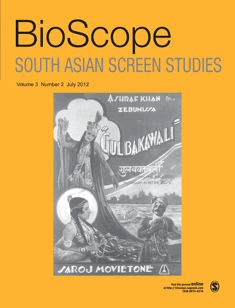
Bioscope-South Asian Screen Studies
Scope & Guideline
Transforming Perspectives on South Asian Media
Introduction
Aims and Scopes
- Interdisciplinary Film Studies:
The journal integrates insights from film theory, cultural studies, and media analysis, fostering a comprehensive understanding of South Asian cinema. - Cultural and Political Contextualization:
Research published in the journal often examines the socio-political contexts surrounding film production and reception, highlighting how cinema reflects and shapes cultural identities. - Focus on Regional Cinemas:
There is a consistent emphasis on regional film industries within South Asia, such as Bollywood, Tollywood, and others, exploring their unique characteristics and cultural significance. - Historical and Contemporary Analysis:
The journal features papers that traverse both historical and contemporary film practices, providing a rich tapestry of South Asian cinematic evolution. - Exploration of Emerging Media:
In addition to traditional cinema, the journal addresses the impact of new media platforms and technologies on film culture, reflecting the evolving landscape of visual storytelling.
Trending and Emerging
- Digital and Social Media Influence:
Recent publications increasingly explore the impact of digital platforms and social media on cinema, reflecting a growing interest in how these mediums alter audience engagement and film production. - Cultural Identity and Representation:
A trend towards examining issues of identity, representation, and cultural politics is evident, particularly in the context of nationalism, gender, and religion within South Asian cinema. - Transnational Perspectives:
There is a rising focus on transnational cinema and cross-cultural exchanges, indicating a broader understanding of South Asian cinema's place in global contexts. - Intersectionality in Film Analysis:
Emerging studies are increasingly employing intersectional frameworks to analyze how multiple identities (gender, caste, sexuality) interact within cinematic narratives. - Documentary and Non-Fiction Films:
An increase in research focusing on documentary cinema highlights its role in social commentary and historical representation, suggesting a critical engagement with real-world issues.
Declining or Waning
- Traditional Film Genres:
Papers focusing on classic film genres and their conventions have become less frequent, suggesting a move towards more innovative and hybrid forms of storytelling. - Purely Commercial Cinema:
There is a noticeable decline in analyses centered solely around commercially successful films, indicating a shift toward more critical and nuanced explorations of cinema's role in society. - Static Thematic Studies:
Research that treats themes in isolation without considering their interconnections within broader cultural and historical contexts is appearing less frequently.
Similar Journals
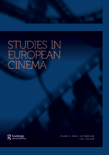
Studies in European Cinema
Celebrating the Artistry of European FilmmakingStudies in European Cinema is an esteemed journal published by Routledge Journals, Taylor & Francis Ltd, focusing on the multifaceted realms of European cinema and its contextual relevance. With an ISSN of 1741-1548 and an E-ISSN of 2040-0594, this journal provides a dynamic platform for researchers and practitioners in the fields of Communication, Visual Arts, and Performing Arts. As reflected by its recent Scopus rankings, it holds a respectable position in the Arts and Humanities with an 84th percentile rank, indicating its significance and impact in the scholarly community. While not entirely open access, Studies in European Cinema seeks to foster critical discourse and analysis from 2004 to 2024, covering a broad spectrum of topics related to film studies, cultural representations, and the evolving narratives within European cinematic practices. Engaging with diverse theoretical frameworks, the journal aims to contribute to the vibrant dialogue surrounding European cinema, making it an essential resource for academics, filmmakers, and students alike who are passionate about exploring cinematic expression in a European context.
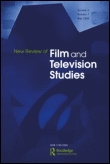
New Review of Film and Television Studies
Transforming Understanding of Film and Television ContextsNew Review of Film and Television Studies, published by Routledge Journals, Taylor & Francis Ltd, stands as a vital platform for scholars and practitioners engaged in the dynamic fields of film and television studies within the United Kingdom. This journal, which has been in circulation since 2010 and will continue through 2024, provides a rigorous academic forum for contemporary research, critical analysis, and innovative discourse surrounding visual storytelling. With an impressive Scopus rank placing it in the 66th percentile for Visual Arts and Performing Arts, and a respectable Q2 categorization, the journal fosters an interdisciplinary approach, bridging communication and cultural studies. While the journal does not currently operate under an open access model, it remains an invaluable resource for researchers, students, and professionals aiming to understand and influence the evolving landscape of film and television in our digital age. As it navigates the intersection of media and society, New Review of Film and Television Studies is essential reading for those looking to advance their knowledge and contribute to the ongoing scholarly conversation.

SIGHT AND SOUND
Exploring the Cultural Tapestry of CinemaSIGHT AND SOUND is a prestigious journal published by the British Film Institute, dedicated to the exploration of cinema and its cultural significance. With an ISSN of 0037-4806 and an E-ISSN matching the same, this journal has been a critical platform for film studies since its inception, contributing valuable insights to the realms of visual arts and performing arts. Despite its discontinuation in the Scopus database post-2021, SIGHT AND SOUND commands respect within its field, currently holding a Q3 rank among Visual Arts and Performing Arts journals. Operating from 21 Stephen Street, London W1P 1PL, England, it serves as a vital resource for researchers, professionals, and students looking to deepen their understanding of film theory, critique, and history. While access to its articles is not open, the journal continues to influence the discourse in film studies, making it a significant asset in academic and professional circles.

Journal of African Cinemas
Documenting the Evolution of African Storytelling on ScreenJournal of African Cinemas is a pioneering publication dedicated to exploring the dynamic field of African cinema and its cultural impacts. Published by INTELLECT LTD in the United Kingdom, this journal serves as a crucial platform for researchers, filmmakers, and students interested in understanding the complexities of film within the African context. With ISSN 1754-9221 and E-ISSN 1754-923X, the journal focuses on various aspects of cinema, including theory, production, and reception, highlighting the rich tapestry of storytelling from the African continent. Despite being classified in Q4 in Communication and Q3 in Cultural Studies and Visual Arts & Performing Arts for 2023, it stands out by capturing the multifaceted identities and experiences portrayed in African films. Engaging with a diverse array of interdisciplinary topics, the Journal of African Cinemas invites contributions that foster critical discourse and promote a deeper understanding of the unique aesthetic and social narratives present in African filmmaking. As it converges into a significant scholarly resource from 2017 to 2023, this journal is an essential read for anyone invested in the intersection of culture and cinema.

Asian Cinema
Exploring the Rich Tapestry of Asian Cinematic ArtsAsian Cinema is a distinguished academic journal dedicated to exploring the vibrant landscape of cinema across Asia, published by INTELLECT LTD, a recognized name in scholarly publishing. With its ISSN 1059-440X and E-ISSN 2049-6710, this journal has carved a niche within the realms of Communication and Visual Arts and Performing Arts, holding a 2023 Q4 ranking in Communication and a more favorable Q2 ranking in Visual Arts and Performing Arts. Operating out of the UK, specifically at THE MILL, PARNALL RD, BRISTOL BS16 3JG, ENGLAND, Asian Cinema provides a platform for interdisciplinary dialogues, critiques, and analyses that contribute significantly to the understanding of cinema as a cultural artifact. Acknowledged for its robust contribution to scholarly research, the journal commands a Scopus rank of 151 out of 667 in Visual Arts and Performing Arts, placing it in the 77th percentile, while achieving a 366 out of 511 rank in Communication, reflecting its ongoing relevance in the field. Although it operates under a traditional access model, Asian Cinema remains vital for researchers, professionals, and students alike, enriching academic discourse and providing valuable insights into the rapidly evolving cinematic practices across Asia.

French Screen Studies
Illuminating French Cinema's Cultural CanvasFrench Screen Studies is a distinguished journal published by Routledge Journals, Taylor & Francis Ltd, focusing on the dynamic interactions between film, media, and cultural studies within the context of French cinema. Since its inception in 2020, the journal has contributed significantly to the academic landscape, providing a platform for innovative research and critical discussion on visual arts and performance as reflected in its prestigious Q1 ranking in Visual Arts and Performing Arts for 2023. Despite being a burgeoning journal, it holds an impressive position within Scopus rankings, particularly in the Arts and Humanities sphere. Researchers and scholars will find the journal a vital resource, as it endeavors to explore the intersections of screen studies with broader social and cultural implications. Although currently not open access, French Screen Studies continues to foster an inclusive dialogue among academics, paving the way for future exploration of France’s influential cinematic heritage.
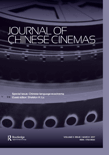
Journal of Chinese Cinemas
Illuminating the Cultural Tapestry of Chinese FilmThe Journal of Chinese Cinemas, published by Routledge Journals, Taylor & Francis Ltd, is a leading platform dedicated to advancing the field of film studies with a focus on cinema from China. With an ISSN of 1750-8061 and an E-ISSN of 1750-807X, this journal provides a comprehensive examination of the cultural, social, and political dynamics inherent in Chinese cinema. Ranked in the Q3 category for Communication and Q1 for Visual Arts and Performing Arts in 2023, it stands out in the academic landscape, particularly noted for its innovative research and diverse discourse. It holds a respectable position in Scopus rankings, coming in at #219 within Visual Arts and Performing Arts, indicating its growing impact among scholars and practitioners alike. With its commitment to publishing high-quality research from 2012 onwards, the journal serves as an essential resource for researchers, professionals, and students eager to deepen their understanding of the evolving landscape of Chinese cinema.
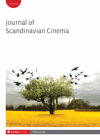
Journal of Scandinavian Cinema
Celebrating the Rich Tapestry of Scandinavian CinemaThe Journal of Scandinavian Cinema, established in 2014 and published by INTELLECT LTD, serves as a premier platform dedicated to the interdisciplinary field of film studies with a specific focus on Scandinavian cinema. With an impressive Q2 category ranking in Visual Arts and Performing Arts for 2023, and a Scopus rank placing it in the top 62nd percentile of its category, this journal is instrumental in advancing scholarly dialogue within the arts community. The journal strives to explore and critique cinematic expressions from the Nordic countries, contributing to a nuanced understanding of cultural narratives and filmic innovations. Committed to fostering accessibility and engagement, it caters to a diverse audience including researchers, professionals, and students keen to delve into the artistic, cultural, and political dimensions of cinema. The Journal of Scandinavian Cinema is essential for anyone interested in the evolution and impact of film in the Scandinavian context, promising rich insights and a robust collection of scholarly articles.
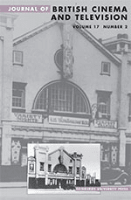
Journal of British Cinema and Television
Advancing Critical Perspectives in British Media StudiesJournal of British Cinema and Television, published by Edinburgh University Press, is a leading academic journal that explores the dynamic interplay between British cinema and television within the context of cultural studies. With an ISSN of 1743-4521 and E-ISSN of 1755-1714, this journal provides a platform for scholarly discourse, enabling researchers, professionals, and students to engage with critical analyses of screen media and its socio-political impact. As a Q3 journal in Communication and a Q1 journal in Visual Arts and Performing Arts for 2023, it occupies an influential position, particularly in the Arts and Humanities, where it ranks in the 90th percentile. The journal's scope encompasses a wide range of topics, from historical perspectives to contemporary practices in British visual culture, making it essential reading for anyone interested in the evolution and significance of screen studies in the UK. While it is not an open-access publication, the rigorous peer-review process ensures high academic standards and contributes to its esteemed reputation in the field. As it continues to converge from 2004 to 2024, the Journal of British Cinema and Television remains a vital resource for those seeking to deepen their understanding of British media and its global resonance.

POSITIF
Transforming Perspectives in the Dynamic Arts CommunityPOSITIF is a distinguished journal, published by POSITIF EDITIONS, focusing on the dynamic fields of Visual Arts and Performing Arts. With ISSN 0048-4911, this journal has been a significant contributor to the arts community since its establishment in 2002, and it continues to captivate readers with its upcoming issues projected until 2024. Based in the heart of France at 12 RUE PIERRE ET MARIE CURIE, 75005 PARIS, POSITIF serves as an invaluable platform for researchers, professionals, and students alike, promoting innovative discourse and critical analysis within the arts. Despite holding a Q4 category ranking in the 2023 classification and a Scopus rank of 637/667, its commitment to enhancing the understanding and appreciation of visual and performing arts remains steadfast. Researchers are invited to contribute to this growing body of knowledge, enriching the journal's scope and impact in a vibrant artistic landscape.